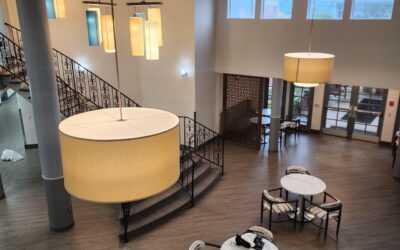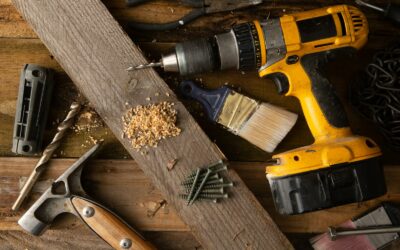Construction is a dynamic field that’s as rewarding as it is risky. As a construction worker, your daily duties are vital to progress, but they also expose you to a range of on-site hazards. It’s crucial to stay vigilant and prepared, and a foundational aspect of this preparedness is wearing an appropriate hard hat. This comprehensive guide unravels the reasons why construction hard hats are more than a mere accessory – they’re a life-saving necessity.
History of Construction Hard Hats
The use of hard hats within the construction industry can be traced back to the early 20th century, where high-rise building construction, large excavation projects, and heavy machinery use first highlighted the need for head protection.
It wasn’t until the 1930s, however, that hard hats became commercially available, born out of the tragic deaths of multiple workers under similar construction-based incidents. Since then, hard hats have evolved significantly, adopting new materials and designs to keep up with safety standards and technological advancements.
Why Construction Hard Hats Matter
Given the paramount importance of the safety helmet in protecting construction workers from head injuries, it’s essential to delve deeper into the mechanics of how these protective gears actually serve their purpose.
Protection Against Head Injuries
The shell of the hard hat acts as a barrier that dissipates the force of a blow over a broader area, thereby reducing the likelihood of localized trauma to the skull. Additionally, the internal suspension system provides a space between the shell and the wearer’s head, which serves as impact protection and further minimizes the force transferred to the head and neck. This buffer zone is critical because it not only protects against acute impacts but also against the cumulative effect of minor, repeated shocks, like falling debris, that can still lead to serious injury over time.
Compliance with Safety Regulations
Safety regulations are in place to set a high standard for the construction hard hats used onsite. These stipulations – often set forth by organizations such as OSHA – ensure that every hard hat meets specific performance criteria before being deemed suitable for use. This isn’t merely about following the rules; it’s about committing to a system that values human life and welfare above all else.
The Construction Hard Hats Role in Preventing Accidents and Fatalities
The role of safety helmets in preventing accidents and fatalities cannot be overstated. The 25,000 injuries and 1,200 fatalities prevented annually are testament not only to the effectiveness of hard hats but also to the necessity of their usage.
Behind these numbers are countless could-have-been tragedies that were avoided, reinforcing the intrinsic value of this seemingly simple piece of safety equipment. Each incident prevented is a reminder of the families, friends, and communities that are indirectly protected by this critical facet of construction safety.
Types of Construction Hard Hats
Hard hats are classified into three categories – Class G (General Use), Class E (Electrical Work), and Class C. The choice of class depends on the work environment and potential hazards. Each class offers various levels of protection against extreme temperatures, electrical shock, and impact.
Features to Consider When Choosing a Hard Hat
Selecting the right hard hat is not a one-size-fits-all endeavor. From suspension systems to brim styles, and even color options, there are several features to consider. High-visibility hard hats are critical for maintaining awareness on bustling job sites, while accessories like face shields and earmuffs can be lifesavers for certain roles within a construction crew.
Custom hard hats are also available for organizations looking to meet specific operational requirements or to reinforce branding on job sites. These customized models can bear company logos, distinctive colors, and patterns that increase team visibility and promote company recognition. Customization aside, it’s crucial to prioritize function over form. For instance, the suspension system within a hard hat, which can be pin-lock or ratchet-based, greatly influences the stability of the fit. Ratchet suspensions allow for quick size adjustment, whereas pin-lock fittings are manually set to fit the wearer’s head.
Material Composition of Construction Hard Hats
The material composition of a hard hat also plays a fundamental role in the level of protection it provides. Typically made from high-density polyethylene (HDPE) or polycarbonate, these materials are chosen for their durability and resistance to penetration. Innovations in material science have led to the development of hard hats that incorporate advanced thermoplastics and even Kevlar®, reinforcing them against high-impact forces and improving their thermal resistance.
When evaluating a hard hat’s suitability, consider the balance between protective features and wearability. A hard hat that is overly cumbersome may lead to non-compliance due to discomfort. Therefore, a well-fitting, comfortable hard hat with appropriate protective features for the specific role and workplace is essential for ensuring ongoing use and safety compliance.
Proper Usage and Maintenance
A hard hat’s effectiveness is significantly determined by how it fits on your head. It’s imperative to ensure that the hard hat is worn correctly each time it’s used.
Instructions for Correct Fit and Adjustment
The hat should be positioned so that the brim is facing forward, acting as a shield for your face against falling objects or intense sunlight. The shell needs to be centered, maintaining a straight and level position on top of your head. To attain a secure fit that does not slide or rotate while working, it’s crucial to correctly adjust the suspension system inside the hard hat. This adjustment ensures a snug fit but should not cause discomfort. It’s important to keep in mind that an incorrect fit not only decreases the hat’s protective capabilities but can also become a distraction at a job site.
Inspection and Replacement Guidelines
While hard hats are durable, they are not invincible and come with an expiration date. To ensure continued protection, hard hats must be subjected to consistent inspection for any signs of degradation such as deformation, dents, cracks, and color fading. These indications of damage can signify that the hard hat’s ability to safeguard you has been compromised.
In light of that, it’s essential to conduct regular checks and remove the hard hat from service if any such defects are found. Replacement of hard hats is generally advised every five years; however, if the hat sustains a heavy blow or shows evidence of severe wear, immediate replacement should be pursued. Staying proactive in replacing damaged hard hats can be the difference between a close call and a catastrophic injury.
Cleaning and Storage Tips
Maintaining the cleanliness and structural integrity of your hard hat is crucial for ensuring that it provides the optimum level of protection. The process involves regularly cleaning the shell and suspension system with a mild detergent and lukewarm water. The use of harsh chemicals, solvents, or abrasive cleaning agents should be strictly avoided since they can weaken the hard hat’s material, reducing its protective performance over time.
After washing, it’s important to allow the hard hat to air dry completely before use. Best practices for storage recommend placing the hard hat in a cool and dry location, shielded from the damaging effects of direct sunlight and extreme temperatures. Also, ensure that the storage area is free from chemicals or materials that could potentially compromise the hard hat’s reliability. Employing these cleaning and storage approaches will contribute to the longevity and efficacy of the hard hat, safeguarding your welfare in the process.
Additional Safety Gear and Best Practices on a Construction Site
While a hard hat offers paramount defense for the head, the integration of additional protective gear such as safety glasses, ear protection, and respirators embodies the holistic approach to construction safety.
Safety glasses are an essential shield against flying debris, dust, and chemical splashes. Similarly, earmuffs or earplugs defend against the long-term effects of excessive noise, while respirators protect workers from inhaling hazardous particles and vapors. Each piece of protective equipment complements the others, forming an interlocking system of defense that minimizes the potential for injury.
Reinforcing Safety through Regular Education and Drills
Beyond personal protective equipment, the establishment of robust safety protocols and procedures is the cornerstone of a secure work environment. This includes regular site safety audits, the immediate reporting and addressing of hazardous conditions, and ensuring clear communication among all team members.
Conducting periodic safety drills ensures that workers are practiced and prepared for emergency situations, building muscle memory and quick reaction times. Ultimately, a proactive culture of safety observed by every individual on the construction site is the comprehensive strategy that protects not only the workers themselves but also the integrity and success of the project they are endeavoring to complete.
Construction Hard Hats Conclusion
The hard hat may seem pedestrian in comparison to high-tech safety gear, yet its track record as a life-saving device is unparalleled. As a construction worker, your hard hat is your most visible commitment to your own safety and the safety of those around you. By understanding its importance, taking the time to choose the right one, maintaining it properly, and using it in conjunction with other safety measures, you contribute to a culture of workplace safety that is non-negotiable.
Remember, in the dynamic and often unpredictable world of construction, wearing your hard hat isn’t just about personal compliance – it’s an act of solidarity toward a collective commitment to safety. It’s the understanding that every bolt tightened, every beam placed, and every floor climbed could harbor a potential risk, and that a simple, effective tool like a hard hat can make all the difference. Stay informed, stay safe, and keep building the future with confidence and security.
View Our Work
Brandywine Haverford Estates by Monarch
South Coast Improvement Company has completed interior renovations at the senior living community, Brandywine Haverford Estates by Monarch. We were entrusted with enhancing the facilities, and the results speak for themselves. The team brought diligence and...
Nouveau Marc by Barclay House
South Coast Improvement Company proudly partnering with QSL Management delivered a comprehensive renovation at Nouveau Marc by Barclay House, a premier senior living community. This project focused on revitalizing key resident areas with an emphasis on safety,...













